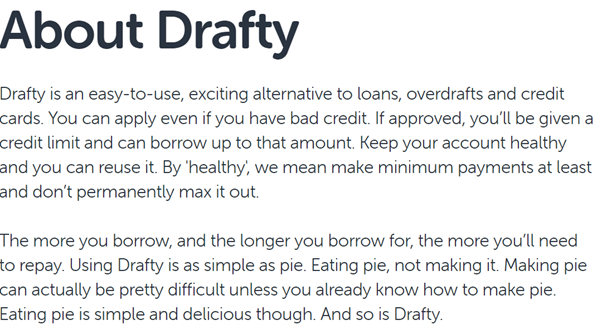Victorian author Charlotte Bronte understood the power of words and how to use them. The opening four words of her novel, Jane Eyre, are some of the most memorable words in English literature: Reader, I married him. Bronte addresses us, captures us, and holds us in just four small words. And that’s what your copy must do – but how do you do it? Is there a formula? Yes! Keep reading to discover how your words can (and must) engage your audience. To know how to write good copy for your website, you’ve got to know your ABC’s:
A – Audience: who are they?
B – Believable: that’s what your copy has to be, even if a fantasy scenario is created
C – Convertible: copy must convert the reader
Understand your audience and speak with their voice
First things first – and this may be an obvious thing to say – you need to write for your audience. You need to use the same language that your audience uses. If you are trying to sell a market analysis tool to investors, are they going to want a conversational and comedic style of communication? Do they want to be drawn in? Unlikely. These are savvy brains wired to make considered and value-driven assessments which offer minimal risk. They will want facts. They will want to be convinced by data, not by the lure of joining the world-wide family of whatever it is.
The Motley Fool’s Stock Advisor page gets straight to the point. They demonstrate they have the knowledge that every investor wants. And they share a tip to make the point:

Compare this with drinks brand giant Ribena. Although they present with us with the facts around sustainability and the journey the blackcurrant makes from bush to bottle, the Ribena marketing team are keen to take you on a fantasy journey into the land of “berry-ness” where you, too, can buy this “berry-licious” drink created with “your favourite Ribena berries.” They’ve been at it for almost 85 years and as a trusted brand, have made the assumption that you know it’s good stuff, but they still choose to use words which your seven-year-old might like, by encouraging you to “share the Ribinariness.” Moving away from its previous health-centric messaging, Ribena’s marketing director said they wanted to “inject some fun into its brand in an effort to speak to 16–34-year-old consumers”, incorporating the phrase “ribenery” into the brand’s vocabulary, which reflected the way in which they knew how consumers described the drink.

Use research to support your copy
Ribena’s brand parent, Suntory, knew that their customers used the word, “ribenery” to describe the drink. So – they built that into their brand vocabulary. Boom! Instant synergy and resonance. The product is brought much closer to the customer and has to do less shouting to get attention. Use focus groups, surveys and do some keyword analysis and conduct other research to find out how your customers describe your product or service. And then give it all back to them in their own words. Literally.
Provide solutions and convert!
Everyone wants to be understood and everyone wants life to be made easier. Whatever you’re selling or providing, you’ll win that all-prized conversion if you can show how you can make life simple, more hassle-free. You need to show that your product is the one we all need, to run our businesses more efficiently or we need to know where we can find that trusted plumber when we’ve just been let down. Your copy needs to demonstrate understanding and empathy. You need to show you have your customer’s interests at heart. You’re on their side. You get it. And – hallelujah – you’ve got the answer! You need to demonstrate that you identify with your audience’s problem or issue. It’s not about using your copy to shout from a distance, “I’m here! Buy me! Use me!” Good copy bends down and listens to the silent (and potentially unspoken) cry of your customer’s heart which says, “I’ve got a problem. I need help. And quickly.” The loan provider Drafty does this well.

Less is more
Your sentences are likely to be short and to the point – with or without an injection of humour. Drafty use short and colloquial sentences to get their point across. The words easy-to-use are in their first sentence. That’s it. I’m sold!
Test your theory – Use A/B testing
If you want the evidence to show that your copy is working, use A/B testing on your web pages. By setting up two different versions of a web page, you can measure the data, to determine which of the pages receives the most hits / less bounce. Science will inform your copy! It works!

Create Brand Guidelines for your copy
To ensure consistency across your site for all of your copy, produce brand guidelines which all your writers have access to, and which will provide guidance around house style, tone of voice, key words, and phrases to be included and so on. As part of this, you need to put some flesh and bones on the identity or persona of the customer you are seeking to win. Are you aiming at – as Ribener marketing director described – the 16–34-year-olds or …? Whoever your key audience is, your copy needs to resonate with them and be appropriate for them. And that means using appropriate words and phrases. Your brand guidelines or style guide should give examples of how to phrase or pitch your offering. Consistency is king!
SEO – Optimise your copy
And last but not least, your copy should be optimised to include the keywords that your audience will be thinking of / searching for. You can do this by:
- Knowing your audience and the words which will mean something to them
- Be clear about what you want to achieve, which will refine your choice of words
- Take a look at what your competitors are doing
- Create a list of subjects or topics you think your audience wants to know more about
- Identify those long tail keywords which Google will pick up on
Marketing specialists MOZ offer a helpful summary of what good SEO should include. https://moz.com/beginners-guide-to-seo

Beware of “overstuffing” your copy with keywords, as your copy will then appear contrived rather than natural. You will also want to:
- Make use of bullet points
- Use internal links which are relevant
- Break up blocks of copy with headers which are optimised
- Use images
So, there you have it! Think audience. Think solution. Think optimisation. That’s how to write good copy for your website.

